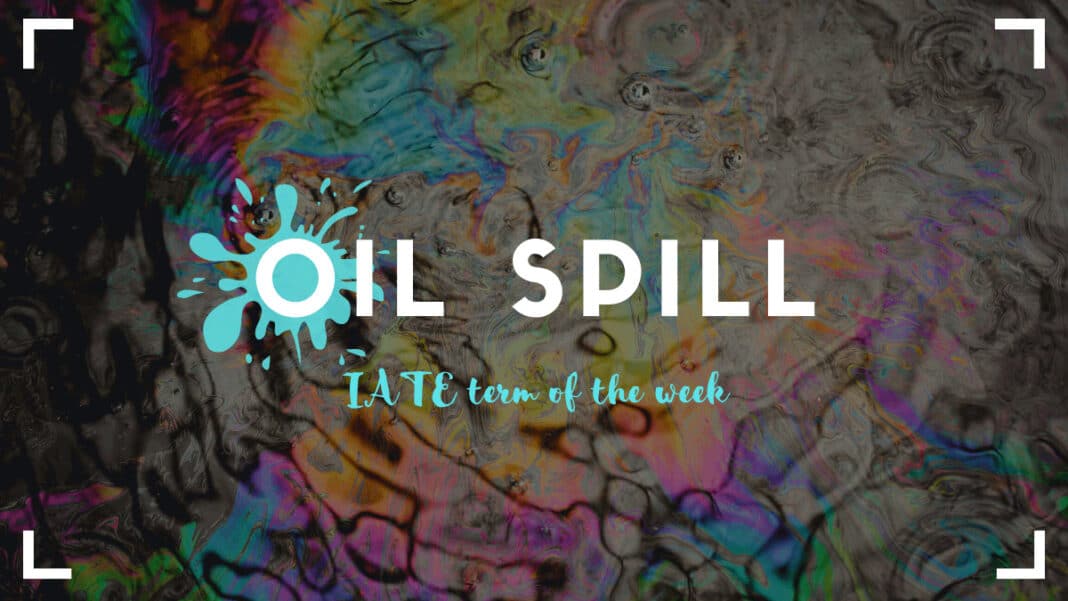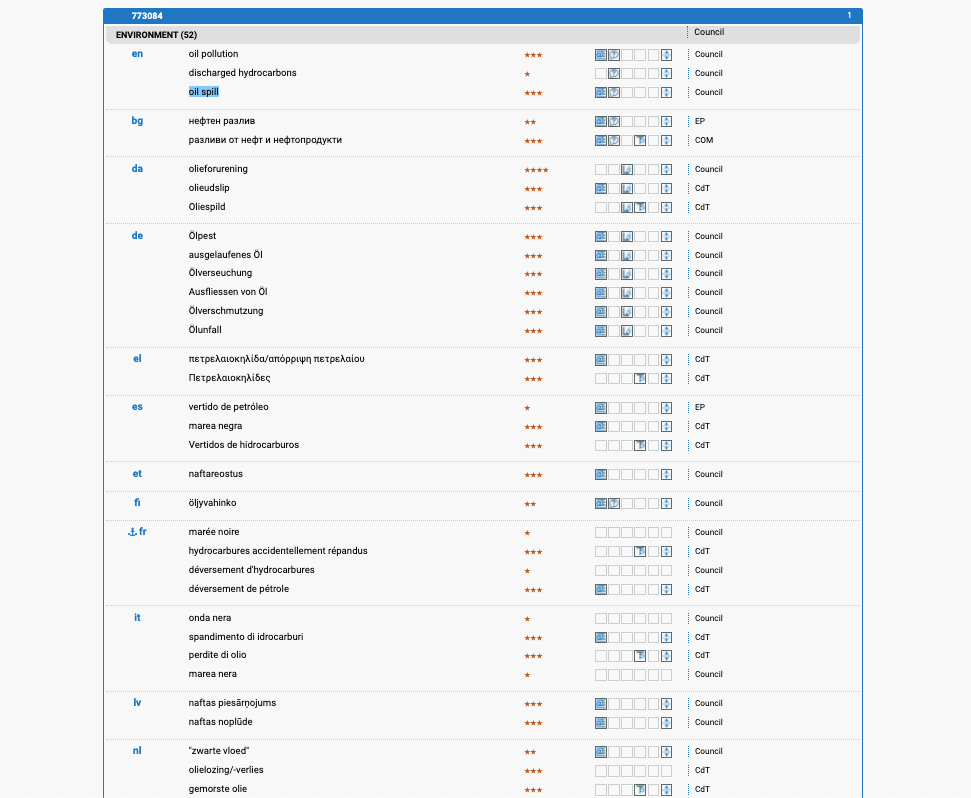On 25 July, the MV Wakashio, a Japanese owned cargo ship travelling from China to Brazil ran aground on a coral reef on the southern shore of Mauritius. Although the crew of 20 was rescued without injuries, the ship remained offshore and started leaking fuel oil on 6th August. The Wakashio held over 3,900 tonnes of fuel oil in total; it is estimated that about 1,000 tonnes of the oil spilled into the sea.
Terminology: what is an oil spill?
The ‘oil’ in ‘oil spill’ refers to liquid hydrocarbon. Hydrocarbons are the remains of fossilised animals and plants used as combustible source of fuel – more commonly, we use the umbrella term ‘petroleum’ when referring to hydrocarbons. The IATE database defines oil spill as the “accidental release of oil, or other petroleum products usually into freshwater or marine ecosystems, and usually in large quantities.”
According to Marine Insight, over 700 million gallons of oil (that is more than 2 billion litres) are spilled into the ocean every year. Over half of the spillage results from land drainage and improper disposal of waste oil. Hydrocarbon particles also end up in the sea from vapours that escape while handling oil on land; this accounts for around 13 percent of all the oil in the sea. Natural seepage of oil from the earth into the sea as well as accidental leaks from ships and offshore drilling both account for about 8 percent of the yearly total.
Effects
Oil spills have disastrous effects on marine life, the environment, human health, and the economy. When we see pictures of an oil spill, we tend to see the black ‘oil slick’ on the water’s surface. Although oil does tend to stay in a concentrated mass on the surface, soluble compounds also dissolve into the water and heavy residues sink down to the sea floor.
- Animals: Marine creatures such as birds, sea mammals, or turtles often come into direct contact with the oil slick, ingesting the oil or inhaling its fumes. Oil destroys the feathers of sea birds, stripping them from their natural protection agains the cold. The oil covering their feathers also prevents them from flying and can cause them to drown. For dolphins and whales, oil congests their lungs and destroys their intestines. Oil also destroys the eyes and lungs of sea turtles. It can furthermore seep into their nesting sites, contaminating eggs and newly hatched turtles. Invertebrates such as octopi or crustaceans living in oil spill zones are often completely eliminated, as they either die from hydrocarbon poisoning or lose their food sources to it. Oil kills fish eggs and larvae and while adult fish can naturally cleanse themselves of contamination after a period, animals and humans who eat contaminated fish can suffer health consequences.

- Environment: Coral reefs are natural harbours for biological diversity. Hydrocarbons bleach coral reefs, which will eventually kill the reefs and all animals who depend on it. Oil also destroys the natural flora on land close to the oil spill zone, such as mangroves and seagrasses. The environmental damage caused by an oil spill can take decades to recover.
- Humans: For humans, the ingestion of oil, consumption of contaminated seafood, or inhalation of fumes can cause serious health problems, including irritation of skin and eyes and respiratory and neurological damage. In addition, oil spills can disrupt local societies and economies. Fishing communities are stripped of their livelihood, while communities dependant on tourism suffer due to the long-term destruction of the natural environment. Oil spills can also disrupt commercial marine activities, such as seaweed harvesting.
Although various activities cause oil to spill into the sea on a regular basis, it is the massive oil spills which usually receive the most media attention. However, even ‘small’ oil spills can have devastating effects. The location of the Wakashio oil spill makes it particularly hazardous: the area around Mauritius is particularly rich in biodiversity and is home to 1,700 species.
Sources
Petroleum Oils and Wildlife. [Online]. Available at: http://www2.cwhc-rcsf.ca/wildlife_health_topics/oil.htm [Accessed 02/09/2020].
What is an Oil Spill at Sea? [Online]. Available at: https://www.marineinsight.com/environment/what-is-an-oil-spill-at-sea/ [Accessed 02/09/2020].
Oils (hydrocarbons) [Online]. Available at: https://www.unenvironment.org/cep/oils-hydrocarbons [Accessed 02/09/2020].
How Mauritius is cleaning up after major oil spill in biodiversity hotspot [Online]. Available at: https://www.nature.com/articles/d41586-020-02446-7 [Accessed 02/09/2020].
Why the Mauritius oil spill is so serious [Online]. Available at: https://www.bbc.com/news/world-africa-53754751 [Accessed 02/09/2020].
Oil Spills. [Online]. Available at: https://medlineplus.gov/oilspills.html [Accessed 02/09/2020].



